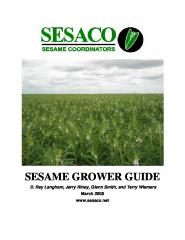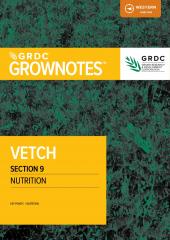Pisum sativum is a ANNUAL growing to 2 m .
It is not frost tender. It is in flower from May to September, and the seeds ripen from July to October. The species is hermaphrodite and is pollinated by Occasionally bees. The plant is self-fertile.
It can fix Nitrogen.
Suitable for: light and medium soils and prefers well-drained soil. Suitable pH: neutral and basic soils. It cannot grow in the shade. It prefers moist soil.
Requires a well-drained moisture retentive soil. Prefers a calcareous soil. Prefers a pH in the range 6 to 7.5. Prefers a rich loamy soil. A light soil and a sheltered position is best for early sowings. Peas have long been cultivated as a food crop and a number of distinct forms have emerged which have been classified as follows. A separate record has been made for each form:- P. sativum. The garden pea, including petit pois. Widely cultivated for its sweet-tasting edible immature seeds, as well as the immature seedpods and mature seeds, there are many named varieties and these can provide a crop from May to October. P. sativum arvense. The field pea. Hardier than the garden pea, but not of such good culinary value, it is more often grown as a green manure or for the dried seeds. P. sativum elatius. This is the original form of the species and is still found growing wild in Turkey. P. sativum elatius pumilio. A short, small-flowered form of the above. P. sativum macrocarpon. The edible-pod pea has a swollen, fibre-free and very sweet seedpod which is eaten when immature. The garden pea is widely cultivated and there are many named varieties. There are two basic types of varieties, those with round seeds and those with wrinkled seeds. Round seeded varieties are hardier and can be sown in the autumn to provide an early crop in May or June, wrinkled varieties are sweeter and tastier but are not so hardy and are sown in spring to early summer. Within these two categories, there are dwarf cultivars and climbing cultivars, the taller types tend to yield more heavily and for a longer period but smaller forms are easier to grow, often do not need supports and can give heavier crops from the area of land used . Cultivars developed for their edible young seeds tend to have pods containing a lot of fibre but some cultivars have now been selected for their larger and fibre-free pods - these cultivars are harder to grow for their seed, especially in damp climates, because the seed has a greater tendency to rot in wet weather. Peas are good growing companions for radishes, carrots, cucumbers, sweet corn, beans and turnips. They are inhibited by alliums, gladiolus, fennel and strawberries growing nearby. There is some evidence that if Chinese mustard is grown as a green manure before sowing peas this will reduce the incidence of soil-borne root rots. This species has a symbiotic relationship with certain soil bacteria, these bacteria form nodules on the roots and fix atmospheric nitrogen. Some of this nitrogen is utilized by the growing plant but some can also be used by other plants growing nearby. When removing plant remains at the end of the growing season, it is best to only remove the aerial parts of the plant, leaving the roots in the ground to decay and release their nitrogen.
HabitatsPlants are not known in a genuinely wild condition.HabitatsCultivated Beds
HabitatsCultivated Beds
Resources
8. Production and postharvest activities for sesame
SESAME GROWER GUIDE
Baylor.agrilife.orghttp://baylor.agrilife.org/files/2011/05/sesamegrowerguide2008.pdf
D. Ray Langham, Jerry Riney, Glenn Smith, and Terry Wiemers
March 2008www.sesaco.net8. Production and postharvest activities for sesame
SESAME GROWER GUIDE
Baylor.agrilife.orghttp://baylor.agrilife.org/files/2011/05/sesamegrowerguide2008.pdf
D. Ray Langham, Jerry Riney, Glenn Smith, and Terry Wiemers
March 2008www.sesaco.net8. Production and postharvest activities for sesame

SESAME GROWER GUIDE
D. Ray Langham, Jerry Riney, Glenn Smith, and Terry WiemersMarch 2008
http://baylor.agrilife.org/files/2011/05/sesamegrowerguide2008.pdf8. Production and postharvest activities for sesame
www.sesaco.net9 In crop management Nutrition GRDC GrowNotes Vetch West

KEY POINTS | NUTRITION
WESTERN
JUNE 2018
SECTION 9
NUTRITION
VETCH
1 in-crop management − nutrition
Section 9 VETCHhttps://grdc.com.au/__data/assets/pdf_file/0024/363615/9-In-crop-management-Nut…9 In crop management Nutrition GRDC GrowNotes Vetch West9 In crop management Nutrition GRDC GrowNotes Vetch West
KEY POINTS | NUTRITION
GRDC
WESTERN
JUNE 2018
SECTION 9
NUTRITION
VETCH1 in-crop management − nutrition
Section 9 VETCH
June 2018Agronomic Guidelines for Flexible Cropping Systems in Dryland Areas of Oregon
1
OSU | Oregon State Universityhttps://catalog.extension.oregonstate.edu/sites/catalog/files/project/pdf/em899…
Agronomic Guidelines for Flexible Cropping
Systems in Dryland Areas of Oregon
Major pests
- Achatina fulica
Acyrthosiphon pisum
Adelphocoris lineolatus
Agrotis ipsilon
Alternaria brassicae
Amaranthus blitoides
Amaranthus retroflexus
Anthemis cotula
Aphanomyces euteiches
Ascochyta pisi
Asphodelus tenuifolius
Athelia rolfsii
Bean leafroll virus
Bean yellow mosaic virus
Botryotinia fuckeliana
Broad bean wilt virus
Bruchus pisorum
Cacoecimorpha pronubana
Capsella bursa-pastoris
Chalara elegans
Chamomilla recutita
Chickpea chlorotic dwarf virus
Choanephora cucurbitarum
Chromatomyia horticola
Chrysodeixis eriosoma
Cirsium arvense
Clover yellow mosaic virus
Cofana spectra
Colletotrichum truncatum
Cucumber mosaic virus
Curtobacterium flaccumfaciens
Datura stramonium
Diabolocatantops axillaris
Didymella pinodes
Digitaria sanguinalis
Ditylenchus dipsaci
Elymus repens
Emex australis
Erysiphe diffusa
Erysiphe pisi var. pisi
Frankliniella intonsa
Frankliniella occidentalis
Fumaria officinalis
Galinsoga parviflora
Gibberella avenacea
Golovinomyces orontii
Halotydeus destructor
Halyomorpha halys
Helicotylenchus dihystera
Helicoverpa armigera
Helicoverpa punctigera
Heterodera cajani
Heterodera goettingiana
Heterodera schachtii
Lampides boeticus
Liriomyza huidobrensis
Liriomyza sativae
Liriomyza trifolii
Lolium temulentum
Longidorus
Loxostege sticticalis
Macrophomina phaseolina
Mamestra brassicae
Megalurothrips usitatus
Melilotus indica
Meloidogyne arenaria
Milk vetch dwarf virus
Nacobbus aberrans
Ophiomyia centrosematis
Orobanche
Pea early-browning virus
Pea enation mosaic virus-1
Pea necrotic yellow dwarf virus
Pea seed-borne mosaic virus
Pea streak virus
Peanut mottle virus
Peanut stunt virus
Peronospora viciae
Peronospora viciae f.sp. pisi
Phalaris minor
Phoma pinodella
Polygonum aviculare
Polygonum hydropiper
Pratylenchus penetrans
Pratylenchus vulnus
Pseudococcus calceolariae
Pseudomonas syringae pv. pisi
Pseudomonas syringae pv. syringae
Pseudomonas syringae pv. tabaci
Pythium aphanidermatum
Pythium ultimum
Raphanus raphanistrum
Rhizobium radiobacter
Rhizobium rhizogenes
Rhodococcus fascians
Riptortus clavatus
Sclerotinia sclerotiorum
Senecio vulgaris
Setaria viridis
Sitona lineatus
Solanum nigrum
Soybean dwarf virus
Spergula arvensis
Spodoptera albula
Spodoptera exigua
Spodoptera littoralis
Stellaria media
Tagetes minuta
Thlaspi arvense
Thrips angusticeps
Thrips flavus
Tobacco streak virus
Tomato spotted wilt virus
Tribolium castaneum
Trichodorus
Trichodorus primitivus
Trichodorus viruliferus
Tylenchorhynchus claytoni
Uromyces viciae-fabae
Urtica urens
Xanthomonas axonopodis pv. alfalfae
Xanthomonas axonopodis pv. phaseoli
Zygotylenchus guevarai
Minor pests
- Acanthospermum hispidum
Alfalfa mosaic virus
Alopecurus myosuroides
Amaranthus hybridus
Anagallis arvensis
Aphis fabae
Artemisia biennis
Aspergillus flavus
Aspergillus niger
Autographa nigrisigna
Avena fatua
Beet western yellows virus yellows
Belonolaimus longicaudatus
Boeremia exigua var. exigua
Botrytis fabae
Byssochlamys lagunculariae
Callosobruchus analis
Callosobruchus maculatus
Candidatus Phytoplasma solani
Chickpea chlorotic stunt virus
Chinavia hilaris
Choanephora infundibulifera
Cirsium vulgare
Clover yellow vein virus
Cochliobolus lunatus
Cochliobolus sativus
Colletotrichum lindemuthianum
Cornu aspersum
Cowpea aphid-borne mosaic virus
Crocidosema aporema
Cuscuta campestris
Cydia nigricana
Cyrtozemia dispar
Delia platura
Diabrotica speciosa
Didymella rabiei
Ditylenchus africanus
Edessa meditabunda
Ephestia kuehniella
Erwinia rhapontici
Faba bean necrotic yellows virus
Fallopia convolvulus
Fusarium oxysporum f.sp. pisi
Fusarium redolens
Fusarium sporotrichioides
Globisporangium irregulare
Glomerella cingulata
Groundnut bud necrosis virus
Haematonectria haematococca
Helicotylenchus multicinctus
Helicotylenchus pseudorobustus
Heliothis virescens
Heterodera ciceri
Heterodera cruciferae
Heterodera glycines
Hieroglyphus banian
Hoplolaimus indicus
Lettuce mosaic virus
Leucinodes orbonalis
Linaria vulgaris
Liriomyza bryoniae
Lolium multiflorum
Mamestra configurata
Megalurothrips distalis
Megalurothrips sjostedti
Melanagromyza sojae
Melanoplus sanguinipes
Meloidogyne chitwoodi
Meloidogyne ethiopica
Mythimna separata
Myzus persicae
Nicandra physalodes
Ophiomyia phaseoli
Orobanche aegyptiaca
Orobanche crenata
Orobanche ramosa
Papaya ringspot virus
Pea mild chlorosis virus
Peridroma saucia
Phakopsora meibomiae
Phalaris paradoxa
Phoma glomerata
Phoma herbarum
Phomopsis longicolla
Phyllophaga smithi
Phytophthora cambivora
Phytophthora pisi
Piezodorus guildinii
Plutella xylostella
Polygonum persicaria
Pratylenchus loosi
Pratylenchus thornei
Pseudomonas savastanoi pv. phaseolicola
Pseudomonas viridiflava
Pythium myriotylum
Rotylenchulus reniformis
Rumex crispus
Sitona humeralis
Sitophilus oryzae
Sonchus arvensis
Spodoptera eridania
Spodoptera frugiperda
Spodoptera praefica
Theba pisana
Thrips imaginis
Thysanoplusia orichalcea
Tipula paludosa
Tobacco necrosis virus
Trichoplusia ni
Turnip mosaic virus
Verticillium dahliae
Watermelon mosaic virus
Xestia c-nigrum
